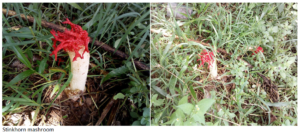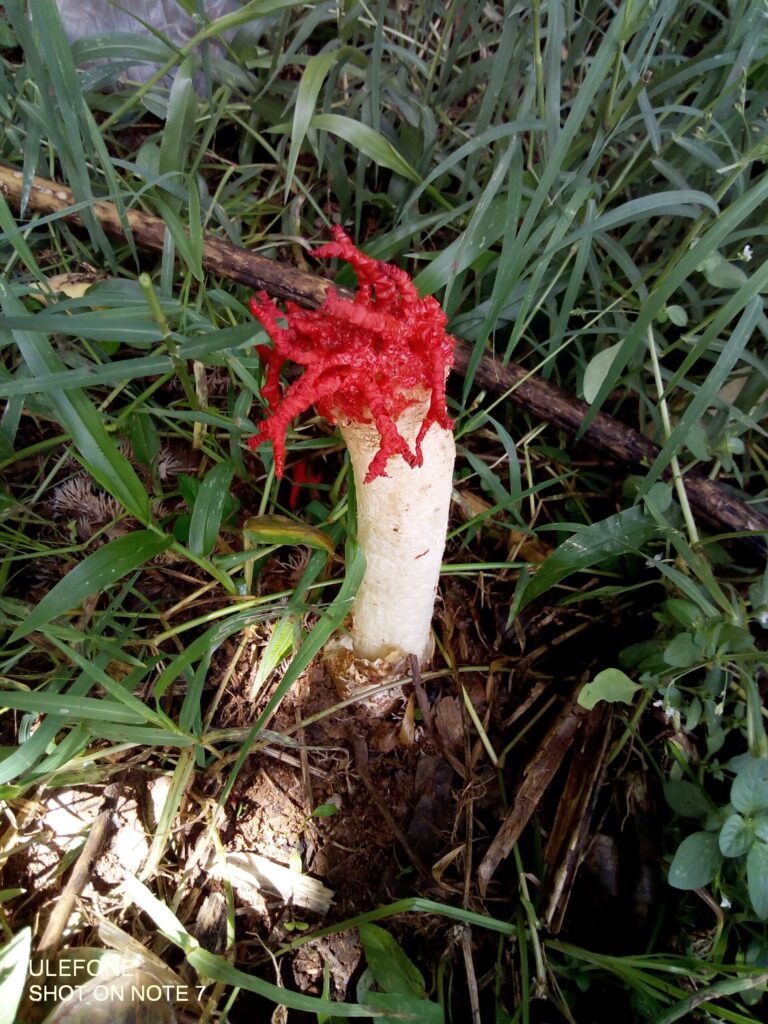Stinkhorns give off a strong, offensive, rotting odor typically described as smelling of rotting dung or carrion or a combination of the two. Hence, the slogan “You’ll smell them before you see them!”. Due to their phallic appearance in many stinkhorns, they have been included in different folklore and cultural superstitions worldwide. Stinkhorn belong to the family Phallaceae and order Phallales. Their common name is derived from “stink” (due to the foul smell they emit) and “horn” (due to the shape of the mature fruiting body). Irrespective of their foul smell, stinkhorns are not considered poisonous. They occur in Malanga Sublocation- Gem sub-county in Siaya County.

Since stinkhorns are not poisonous, they are eaten in some communities in a variety of ways ranging from use as salad toppings, in soups, incorporation in sausages and pickled items, and as a short-term food preservative. However, the communities in Siaya county associate them with decaying fecal materials and therefore not associated with food.
As opposed to most mushroom-forming fungi that release their spores into the wind for dispersal, stinkhorns do not have this ability, and therefore have other methods of spore dispersal. The stinkhorns fungi utilize flies for spore dispersal. They emit a foul smell from the slimy spore mass that is most often exposed at the top of their stalks at maturity. This smell attracts insects and other invertebrates that spread the spores to new locations.
They are saprophytic fungi, feeding on dead and decomposing plant material thus playing an important role in decomposition in their native ecosystems. Insects play an especially important role in stinkhorn reproduction. The volatile foul-smelling chemicals emitted from the spores are attract invertebrates that feed on the spore mass helping in spore dispersal. The ingested spores are then dispersed via the foraging invertebrates’ excrement, or sometimes they are transported to new sites via attachment to the invertebrate’s body. The invertebrates receive the benefits of a food source from the stinkhorn and are essential to the spread and maintenance of genetic diversity as they move from one mushroom to the next. The role of invertebrates in stinkhorn reproduction is comparable to the mutually beneficial behavior of bees foraging on nectar of multiple flowers and spreading pollen from flower to flower. However, the ecological interactions between invertebrates and stinkhorns is still poorly known in Kenya and therefore there is need for further study.
